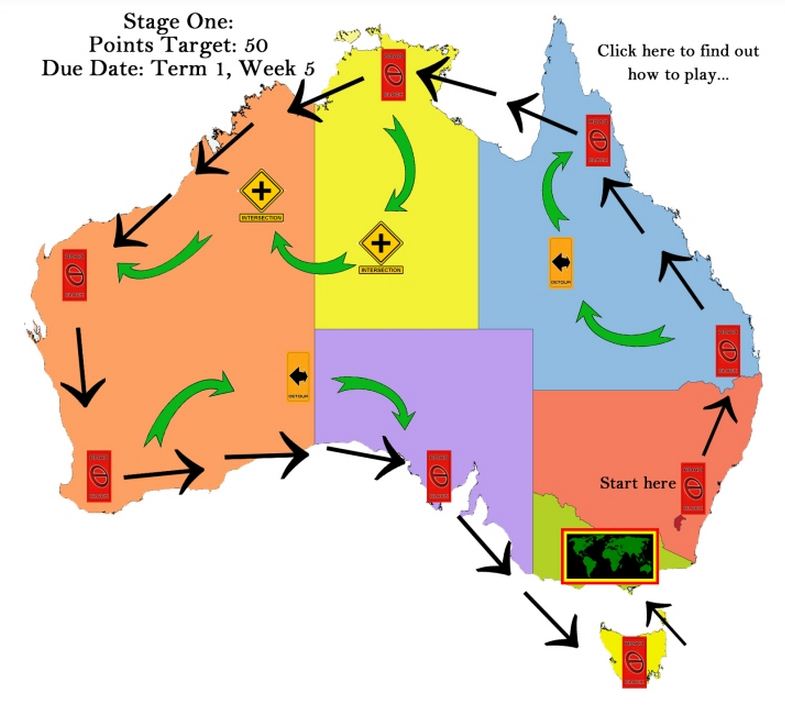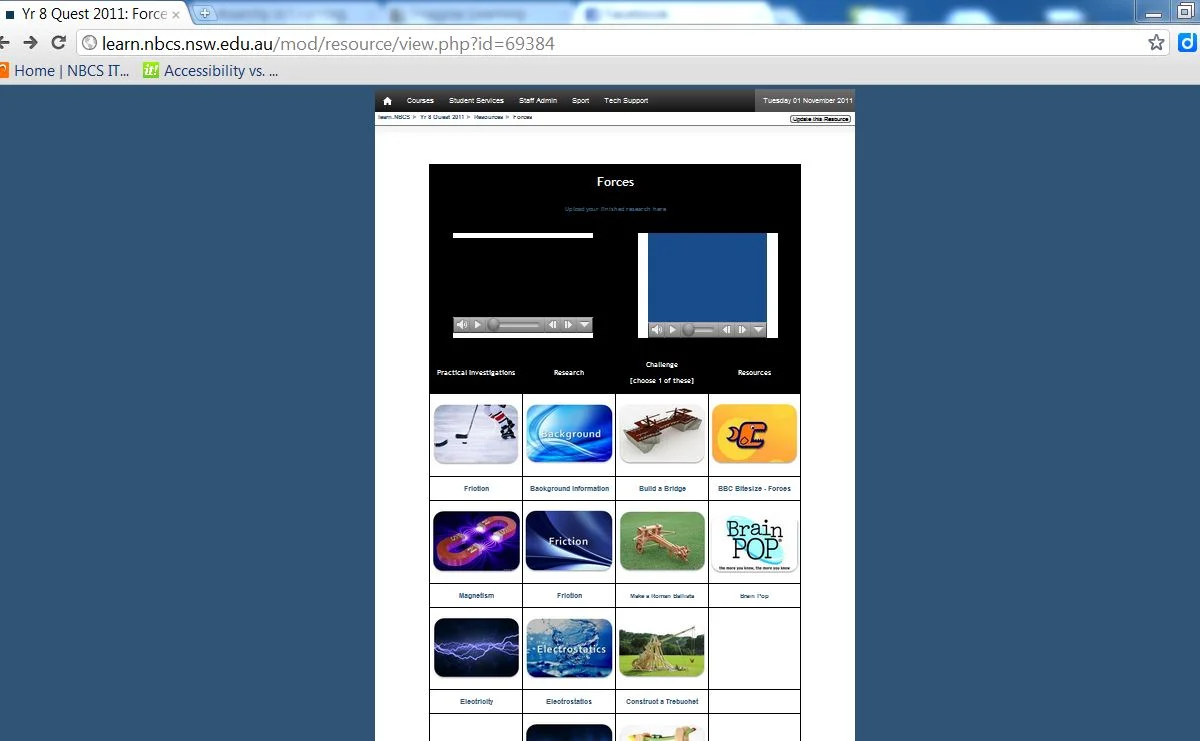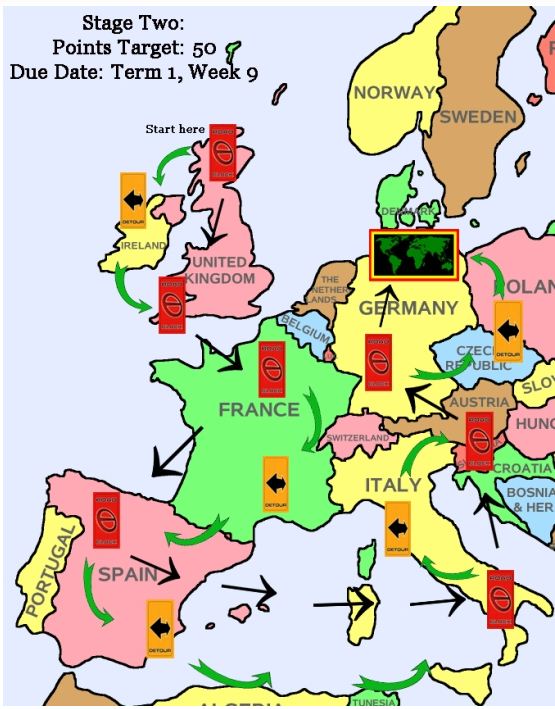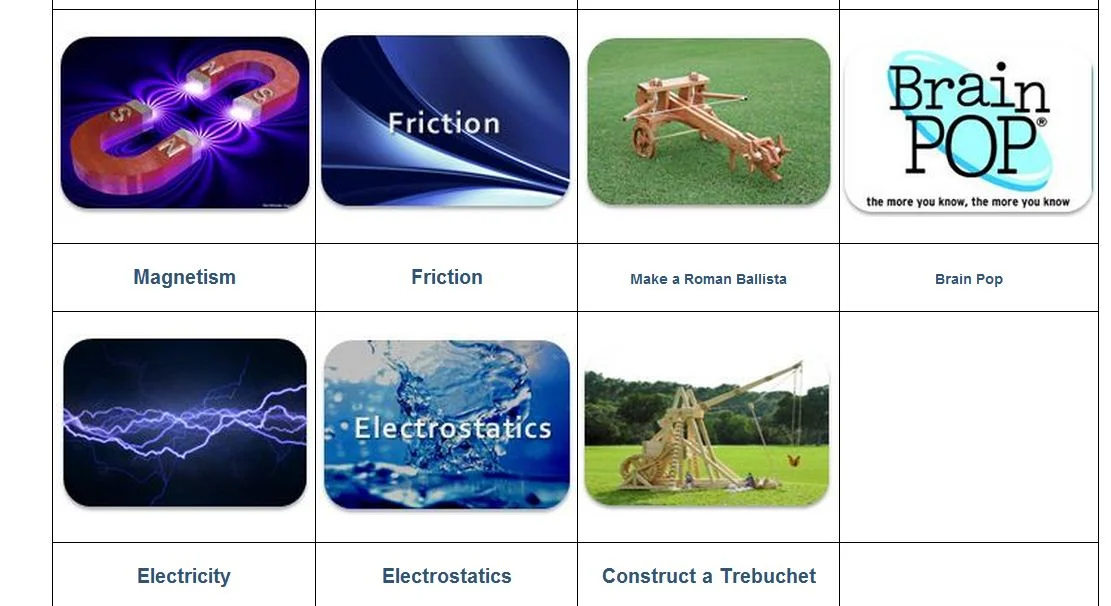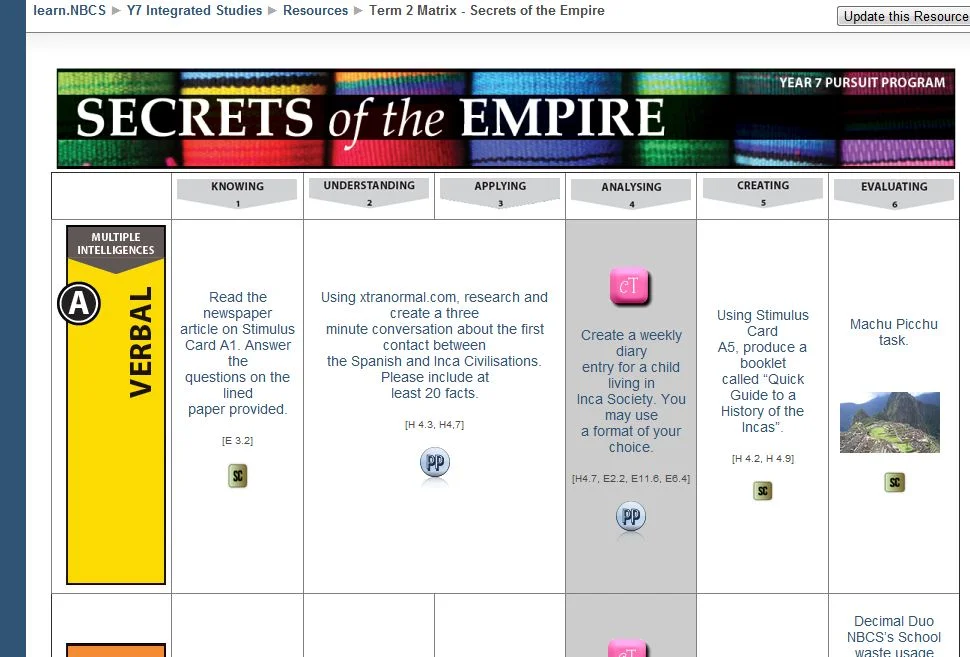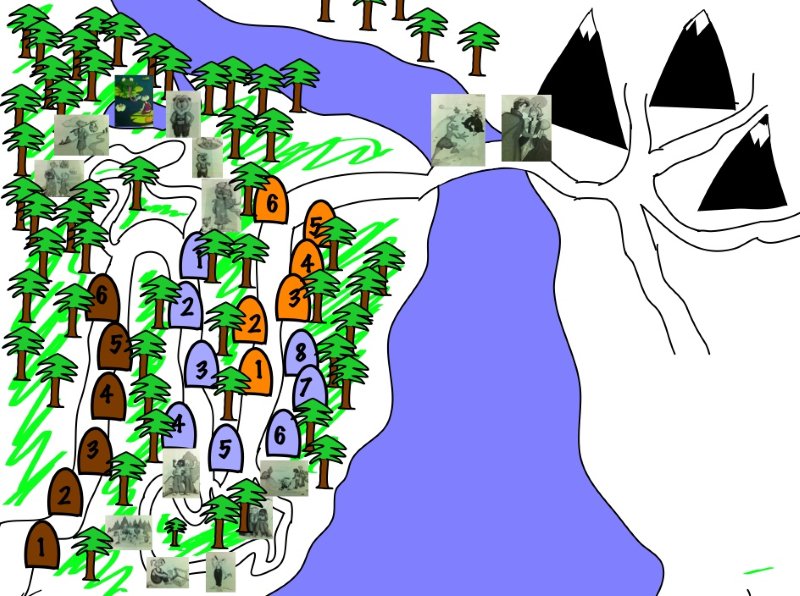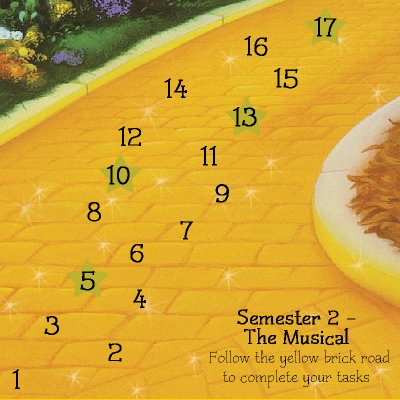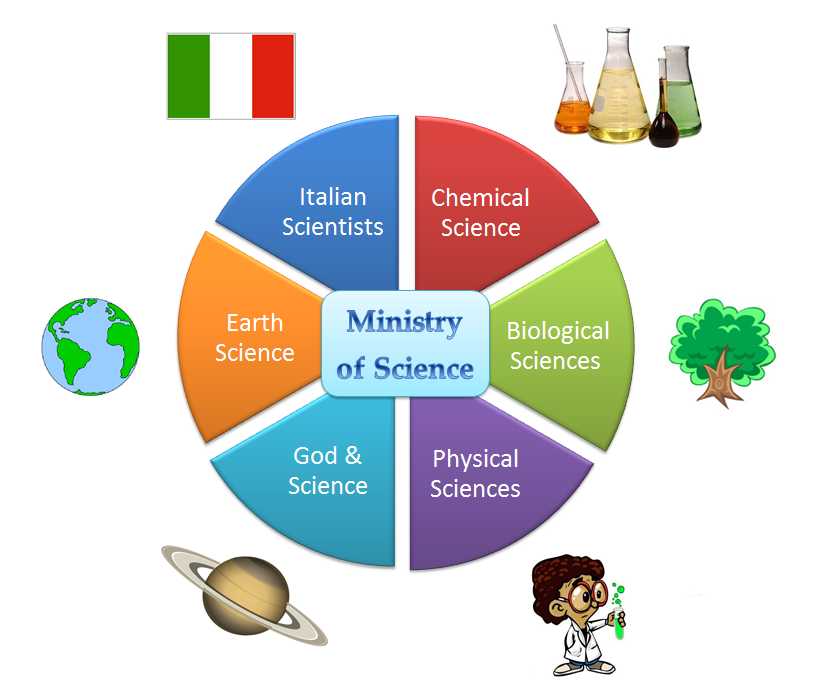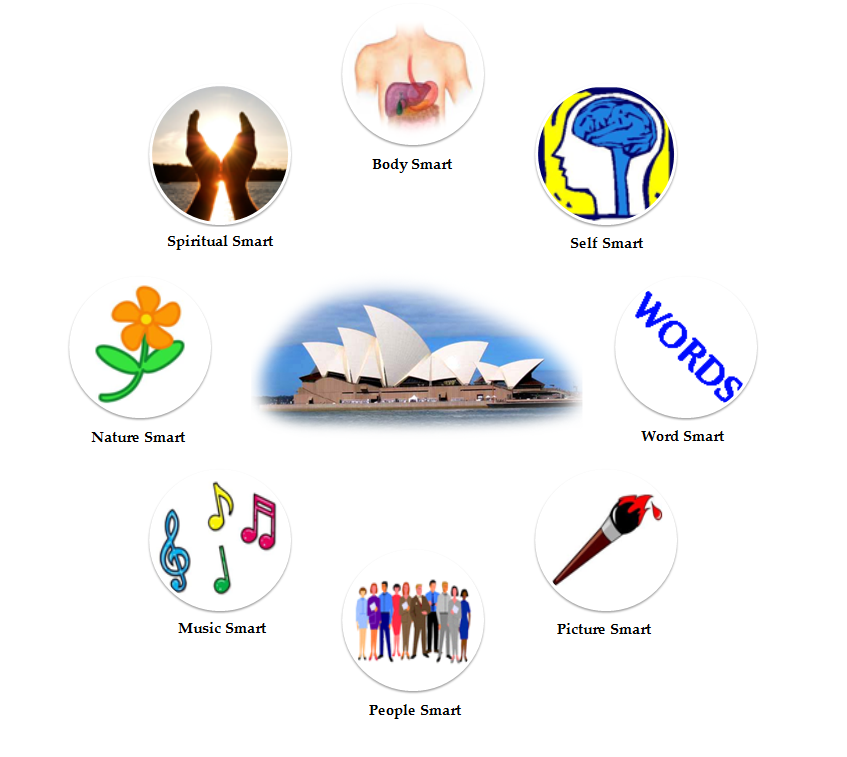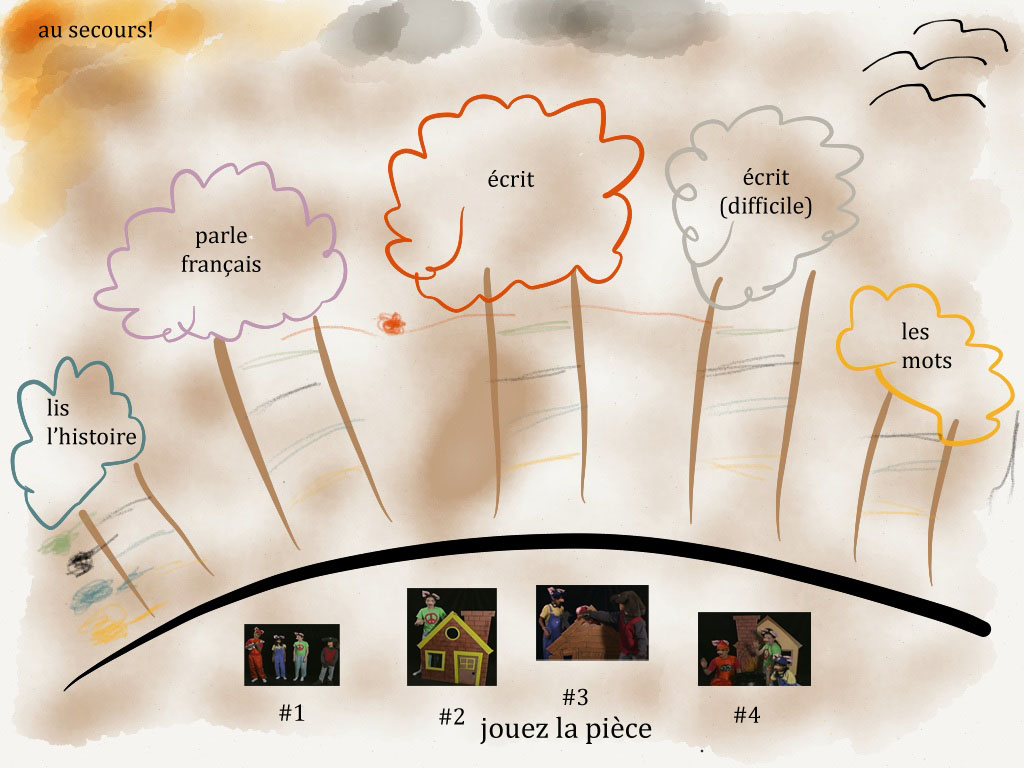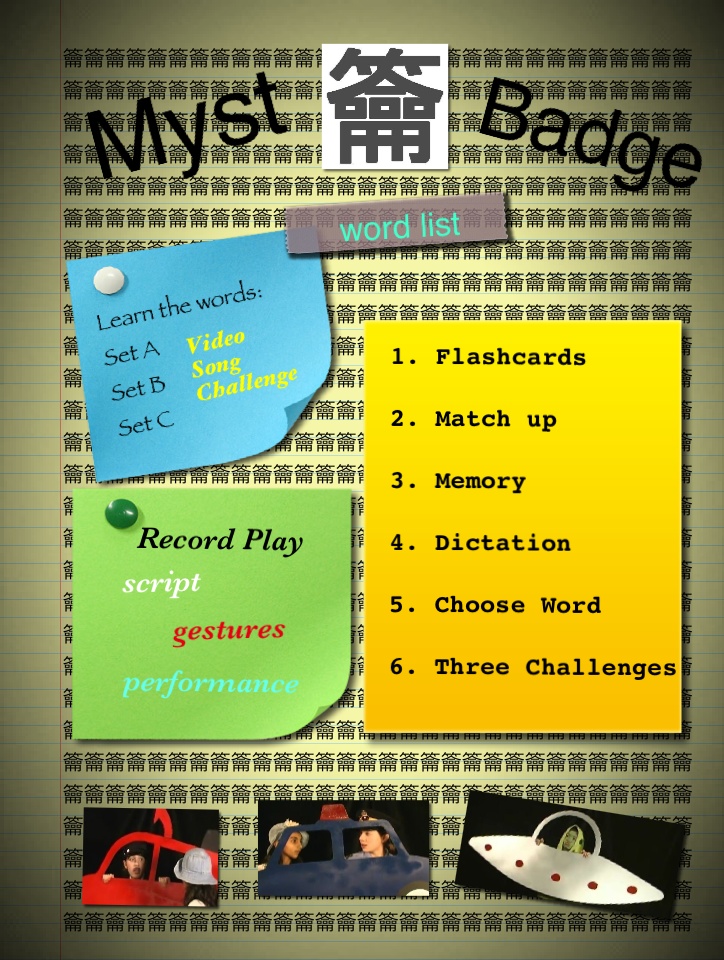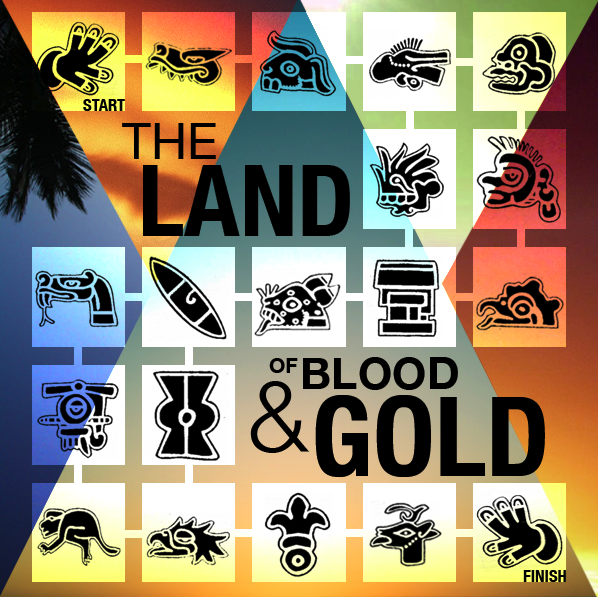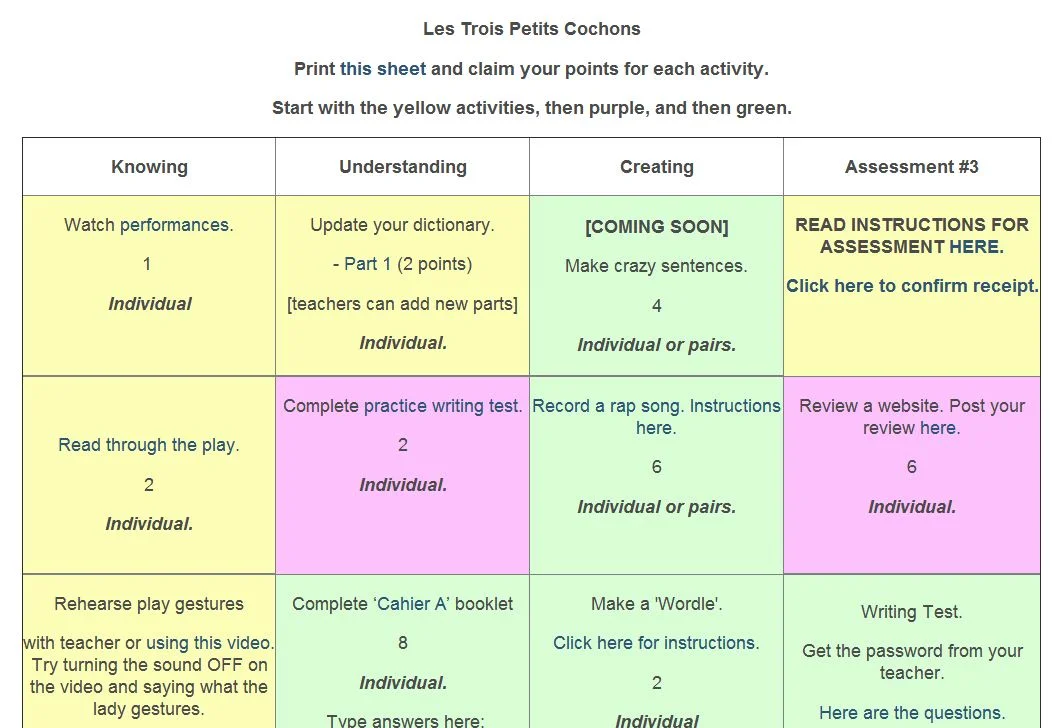Defeat the 'scroll of death' that often occurs in Learning Management Systems and other online learning resource websites, by hot spotting an image through to each activity or resource. The image functions as a visual metaphor, or map, for the unit. You can communicate a great deal of information, included differentiated paths, through the way the map is set out. Consider the impact of different genres: a menu, a maze, a board game, a map, or an object or scene.
Retrieve a set of TUTORIALS by going here.
You could also use SnagIt or Photoshop to create image maps. SnagIt creates a Flash file which is a problem for iPads!
Learning Landscape Model
Read this blog post about the underlying concepts:
- learning landscape is the entire sum of POSSIBLE learning experiences curated for the student. When sketching out a unit you might brainstorm these. They can be very directed or utterly open ended. i.e. the landscape could be scaffolding for PBL... or include cloze passages.
- the frame is a visual map that takes the landscape and shows possible paths for navigating through it. Different genres have different characteristics: a menu frame, a maze frame, a metaphor frame, etc.
- the gateways are compulsory parts of the learning landscape, and might have some flexibility (show me you understand in a song, an essay, or a story) or they might be standardised and strict (exam conditions, 9am, all together). You can put them in for formal assessment purposes or as part of the balance between structure and choice.
- look at 'gamification' for tracking mechanisms so that every child can push their way through the learning landscape in different rhythms.
- guru sessions are teacher talk sessions, but with potential twists: you run them several times and let students opt in when and if they wish, or you record them and put them on the landscape, or you run them spontaneously when you realise students are struggling with a concept or skill (also known as 'just in time' and 'pop-up' sessions).
You can combine a learning landscape with a re-imagined physical space in some powerful ways. Imagine: different students engaging in different tasks and appropriating the space and tools they need.
Fundamental to this thinking is a shift from teacher-driven to student-driven, from 'push' to 'pull'. The teacher's role is as the original curator and designer of the space, but then hands over initiative and agency to students and puts energy into coaching, mentoring, troubleshooting, tracking progress, etc.
There is no reason why formal teacher-lead sessions cannot remain in the mix, but HANDLE WITH CARE! You never want to increase teacher agency at the expense of student activation.


